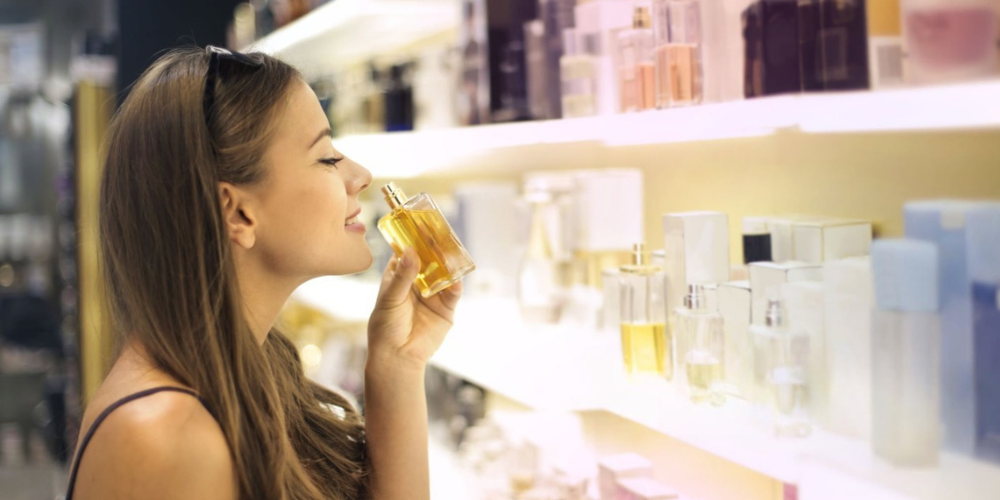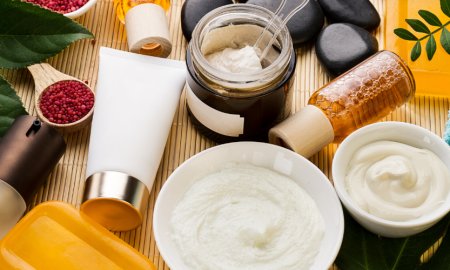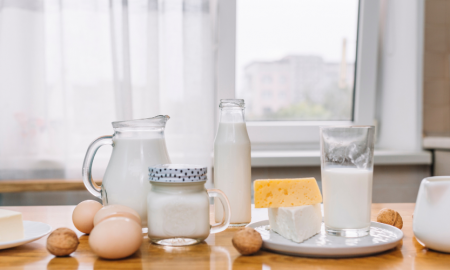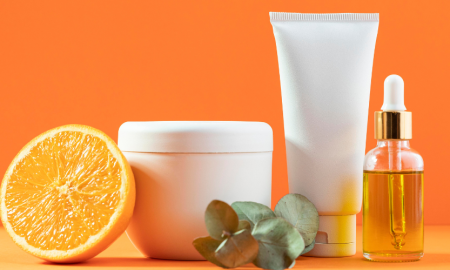
Why Fragrance Is Becoming a Key Player in Wellness Routines

Fragrance has moved beyond its traditional role as a mere scent accessory, now taking a significant place in the wellness conversation. Consumers today are increasingly drawn to products that offer more than just a pleasing aroma.
They seek fragrances that contribute to mental clarity, emotional balance, and sensory comfort. This shift is reshaping the fragrance industry, driving brands—both new and established—to blend the art of scent with the science of well-being.
The Rise of Functional Fragrance
The idea that fragrance can influence mood and cognitive function is not new, but recent developments have given this concept fresh momentum. Modern consumers want scents that do more than smell good—they want fragrances that impact how they feel and think.

Instagram | bellahadidmidias | Scents are evolving with brands like Orebella focusing on skin and mental states.
For instance, brands like Moods promote “mind-altering” effects, while others like Bella Hadid’s Orebella focus on nourishing skin alongside scent. Edeniste’s Lifeboost collection aims to trigger calming and restorative mental states, such as peaceful sleep or relaxation.
Michael Nolte, a creative director in the beauty industry, notes that consumers now look for mood support and mental clarity from fragrances, not just fragrance itself. Retailers like Harrods and Liberty report growing success with fragrance lines that emphasize functional benefits, such as crystal-charged scents by Vyrao designed to boost energy through natural oils.
Science Meets Scent
This new wave of fragrances blends neuroscience with modern wellness. Once seen as a traditional practice, aromatherapy is now becoming a daily lifestyle choice. Gregory Allen, co-founder of Moods, says the brand’s goal is to bring aromatherapy into the present. It focuses on pairing function with sensory appeal to make the scent feel intentional, not just decorative.
Research supports this shift. Clinical studies show that natural essential oils can activate parts of the brain linked to mood and memory. Dr. Mark Moss, a psychology expert, explains that while aromatherapy has always aimed to heal through scent, brands like Moods now give it scientific support.
This makes functional fragrance stand out from regular perfumes. Many traditional scents, especially synthetic ones, only create emotional effects. They don’t interact with the brain in the same way natural oils do.
The Challenge of Authenticity
While the wellness trend creates exciting opportunities, not every scent marketed for mood benefits wins people over. Industry experts stress that real credibility comes when wellness is built into the brand’s core values—not slapped on as a quick marketing hook. Shoppers are quick to sense when the claims don’t have solid support, which is why transparency is key.
Hannah Richardson, a buyer at Liberty, stresses that wellness-inspired fragrances should feel true to the brand’s core values. She points out that this approach helps maintain credibility and avoids the skepticism that comes with mere “wellness branding.”
Aromatherapy’s Modern Update

Freepik | Consumers are using functional fragrances to find mental relief in a convenient, stylish way.
The growing fascination with functional fragrance mirrors larger wellness movements, according to Nielsen IQ and Mintel. In an era of financial strain and heightened stress, people are gravitating toward products that promise mental ease and emotional balance. Functional scents offer an easy way to fold those wellness benefits into everyday routines without losing any sense of style or sensory pleasure.
Aromatherapist Jo Kellett points out the difference between classic aromatherapy and this newer approach. Traditional aromatherapy leans on pure essential oils for full-body, holistic healing. Functional fragrance, on the other hand, is designed for the modern pace—blending mood-specific benefits with wearable, science-backed formulations. The result is a bridge between age-old practices and contemporary convenience.
Future Directions for Fragrance and Wellness
For brands, the challenge is to create fragrances that work on two levels—effective in lifting mood or easing stress, and appealing enough to wear every day. While wellness claims can pique curiosity, the scent itself has to win over the senses and deliver genuine results. Today’s consumers expect clarity and proof, whether they’re chasing better sleep, sharper focus, or a calmer mind.
As fragrance moves beyond luxury and becomes part of daily self-care, its purpose is shifting. The blend of science and tradition is giving brands the opportunity to meet modern wellness needs through scent. When a fragrance truly supports emotional balance and mental clarity, it becomes more than a personal accessory—it becomes a meaningful part of everyday life.
More inBeauty & Cosmetics
-
`
Why Are Men Taller Than Women? New Genetic Study Finds Clue
For centuries, the average height difference between men and women has been noticeable—men generally stand about five inches taller. While environment...
July 23, 2025 -
`
How Upcycled Beauty Ingredients Are Reshaping the Industry’s Future
The beauty industry is going through a big shift — and it’s not just about trends. As waste problems grow and...
July 17, 2025 -
`
A Look Inside Faith Kipyegon’s Groundbreaking Mile Run in Paris
Last week in Paris, Faith Kipyegon returned to a place she knows well: Stade Sébastien Charléty. But this time, she wasn’t...
July 9, 2025 -
`
Dairy Is Making a Major Comeback — And Health Shoppers Are Loving It
Just a few years ago, dairy sat quietly in the back seat while plant-based alternatives took the spotlight. Now, it’s stepping...
July 4, 2025 -
`
Does Aging Cause Dental Problems?
Aging doesn’t automatically mean losing teeth or developing gum disease. In fact, older adults today are holding onto more of their...
June 25, 2025 -
`
How Upcycled Ingredients Are Shaping the Future of Cosmetics
What used to end up in bins or compost heaps is now finding a new life inside skincare bottles and beauty...
June 18, 2025 -
`
Rock Legend Rod Stewart Trains to Break Sprint Record at 80
Age isn’t slowing Rod Stewart down. Known worldwide for his legendary voice, stadium-filling tours, and timeless hits like “Maggie May”, the...
June 11, 2025 -
`
The Truth Behind Detox Diets – Health Boost or Risky Trend?
It’s hard to scroll through your feed without seeing someone sipping green juice with promises of instant energy, glowing skin, and...
June 3, 2025 -
`
Is Dr. Oz Fit to Lead Medicare?
The announcement of Dr. Mehmet Oz as President-elect Donald Trump’s pick to lead the Centers for Medicare and Medicaid Services (CMS)...
May 29, 2025














You must be logged in to post a comment Login